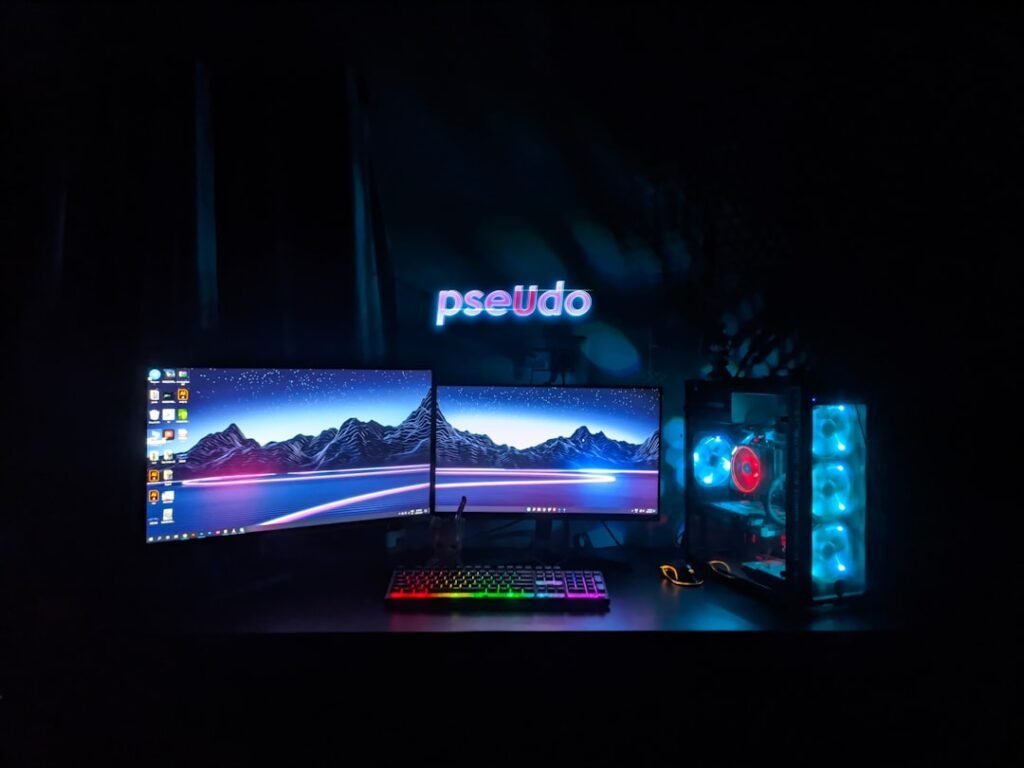Now Reading: The Ultimate Boss Rush: Top Modern Modes
-
01
The Ultimate Boss Rush: Top Modern Modes
The Ultimate Boss Rush: Top Modern Modes

As a gamer, I have always been drawn to the thrill of intense challenges that push my skills to the limit. Among the various gameplay modes that developers have crafted, boss rush modes stand out as a unique and exhilarating experience. These modes strip away the distractions of exploration and narrative, placing players directly in the heat of battle against formidable foes.
The essence of a boss rush is simple: face a series of powerful bosses in quick succession, testing not only my combat prowess but also my strategic thinking and adaptability. Boss rush modes often serve as a culmination of everything I’ve learned throughout the game, demanding mastery of mechanics, timing, and resource management. They can be found in a variety of genres, from action-adventure to platformers, each offering its own flavor of challenge.
As I delve into some of the most iconic boss rush modes across different games, I find that they not only provide a thrilling test of skill but also create memorable moments that linger long after the final boss has been defeated.
Key Takeaways
- Boss Rush modes are a popular feature in many action games, challenging players to face a series of tough boss battles in quick succession.
- Devil May Cry 5’s Void Mode allows players to practice and perfect their combat skills against any enemy or boss in the game.
- Sekiro: Shadows Die Twice offers the Gauntlet of Strength, a series of challenging boss battles that test players’ mastery of the game’s mechanics.
- Hollow Knight’s Pantheon of Hallownest is a grueling boss rush mode that pits players against all of the game’s major bosses in a relentless gauntlet.
- Cuphead’s Boss Rush Mode is a relentless challenge that pits players against a series of tough boss battles with no breaks in between.
Devil May Cry 5: The Void Mode
In “Devil May Cry 5,” the Void Mode serves as an exceptional example of a boss rush experience. This mode allows me to engage with various bosses in a controlled environment, where I can practice my skills without the pressure of a narrative context. The beauty of the Void lies in its flexibility; I can choose which bosses to face and tailor my approach based on my character’s abilities.
This freedom encourages experimentation, allowing me to refine my combat style and discover new strategies. The bosses in “Devil May Cry 5” are not just obstacles; they are intricate puzzles that require me to adapt my tactics on the fly. Each encounter demands a different approach, whether it’s dodging their powerful attacks or exploiting their weaknesses.
The adrenaline rush I feel as I chain together combos and unleash devastating moves is unparalleled. The Void Mode encapsulates the essence of what makes boss rushes so appealing: the opportunity to hone my skills while relishing the thrill of battle against some of the most iconic foes in gaming history.
Sekiro: Shadows Die Twice: Gauntlet of Strength

“Sekiro: Shadows Die Twice” takes the concept of boss rush modes to a new level with its Gauntlet of Strength. This mode is not just about facing bosses; it’s about overcoming the relentless challenge that each one presents. As I step into this gauntlet, I am immediately reminded of the game’s punishing difficulty and the importance of precision in every move I make.
The Gauntlet forces me to confront multiple bosses back-to-back, each with their own unique mechanics and attack patterns. What makes this mode particularly engaging is the way it tests my understanding of the game’s combat system. I must utilize every tool at my disposal, from parrying to grappling, to survive each encounter.
The sense of accomplishment I feel after defeating a particularly tough boss is immense, as it signifies not just victory over that foe but also growth in my skills as a player. The Gauntlet of Strength is a true testament to the rewarding nature of boss rush modes, where perseverance and skill culminate in triumphant moments that are etched in my memory.
Hollow Knight: Pantheon of Hallownest
In “Hollow Knight,” the Pantheon of Hallownest offers an intricate and challenging boss rush experience that captivates me from start to finish. This mode is structured as a series of increasingly difficult encounters against the game’s most formidable bosses, each one requiring me to adapt and refine my strategies. The beauty of the Pantheon lies not only in its challenge but also in its rich lore and artistic design, which enhance every battle.
As I progress through the Pantheon, I find myself revisiting familiar foes with newfound determination. Each boss encounter feels like a dance, where timing and precision are crucial for survival. The thrill of narrowly dodging an attack or landing a perfectly timed strike fills me with exhilaration.
The Pantheon serves as a celebration of everything that makes “Hollow Knight” special, combining challenging gameplay with an emotional connection to its characters and story. It’s a mode that truly tests my mettle while immersing me in the hauntingly beautiful world of Hallownest.
Cuphead: Boss Rush Mode
“Cuphead” is renowned for its stunning hand-drawn art style and challenging gameplay, and its Boss Rush Mode is no exception. This mode distills the essence of what makes “Cuphead” so captivating: fast-paced action and relentless difficulty. As I dive into this mode, I am immediately thrust into a whirlwind of colorful chaos, where each boss presents a unique set of challenges that require quick reflexes and strategic thinking.
The charm of “Cuphead” lies in its whimsical yet punishing design. Each boss encounter is like a mini-game in itself, filled with creative attack patterns and vibrant animations that keep me on my toes. The satisfaction I feel when I finally conquer a particularly tough boss is immense; it’s a testament to my perseverance and skill development throughout the game.
Boss Rush Mode encapsulates the spirit of “Cuphead,” offering an exhilarating experience that challenges me while immersing me in its beautifully crafted world.
God of War: Valkyrie Queen

In “God of War,” facing the Valkyrie Queen is one of the most intense boss rush experiences I’ve encountered. This formidable foe serves as a culmination of everything I’ve learned throughout my journey as Kratos. The Valkyries are known for their brutal difficulty, and facing them in succession tests not only my combat skills but also my understanding of the game’s mechanics.
The encounter with the Valkyrie Queen is particularly memorable due to her intricate attack patterns and devastating abilities. Each phase of the battle requires me to adapt quickly, utilizing every weapon and ability at my disposal. The sense of urgency and tension during this fight is palpable; every misstep could lead to defeat.
However, when I finally emerge victorious, it feels like a monumental achievement—a true testament to my growth as a player and my mastery over the game’s combat system.
Dark Souls 3: The Ringed City: Slave Knight Gael
In “Dark Souls 3,” facing Slave Knight Gael in The Ringed City is an unforgettable experience that embodies the essence of boss rush modes. Gael is not just another boss; he represents the culmination of everything I’ve faced throughout the game. His relentless attacks and intricate mechanics demand that I stay focused and adapt quickly to his ever-changing strategies.
The battle against Gael is both exhilarating and punishing; every moment feels like a test of my skills and patience. As I navigate through his various phases, I find myself fully immersed in the challenge, relying on my instincts and knowledge gained from previous encounters. Defeating Gael is not just about overcoming a difficult foe; it’s about embracing the journey that led me to this moment—a journey filled with trials, tribulations, and ultimately triumph.
Bloodborne: Chalice Dungeons
“Bloodborne” offers an intriguing twist on boss rush modes through its Chalice Dungeons. These procedurally generated dungeons present a series of challenging encounters against various bosses, each one more formidable than the last. As I delve into these dungeons, I am constantly reminded of the game’s dark atmosphere and relentless difficulty.
The Chalice Dungeons allow me to face multiple bosses in quick succession, testing my skills and adaptability in ways that are both thrilling and daunting. Each encounter feels unique due to the randomization of enemies and environments, keeping me on my toes as I navigate through these treacherous spaces. The sense of accomplishment I feel after conquering a particularly tough dungeon is immense; it’s a testament to my perseverance and skill development throughout “Bloodborne.” The Chalice Dungeons encapsulate the essence of what makes boss rush modes so appealing—an exhilarating challenge that rewards dedication and skill.
Nioh 2: The Abyss
In “Nioh 2,” The Abyss serves as an engaging boss rush mode that challenges me to confront powerful foes in increasingly difficult encounters. This mode pushes me to refine my combat skills while navigating through various layers filled with formidable enemies. Each layer presents unique challenges that require me to adapt my strategies based on enemy types and attack patterns.
The thrill of facing multiple bosses back-to-back in The Abyss is exhilarating; it tests not only my combat prowess but also my resource management skills. As I progress deeper into this mode, I find myself fully immersed in the challenge, relying on every tool at my disposal to survive each encounter. The sense of accomplishment I feel after conquering a particularly tough layer is immense; it signifies not just victory over that foe but also growth in my skills as a player.
Bayonetta 2: Non-Stop Infinite Climax
In “Bayonetta 2,” the Non-Stop Infinite Climax mode offers an adrenaline-pumping boss rush experience that keeps me on edge from start to finish. This mode challenges me to face waves of enemies and powerful bosses without any breaks, demanding peak performance at all times. The relentless pace forces me to stay focused and adapt quickly to each encounter’s unique challenges.
The beauty of Non-Stop Infinite Climax lies in its combination of fast-paced action and intricate mechanics. Every moment feels like a test of skill as I chain together combos and unleash devastating attacks against formidable foes. The satisfaction I feel when I finally conquer this mode is immense; it’s a testament to my dedication and mastery over Bayonetta’s combat system.
This mode encapsulates everything that makes boss rush experiences so thrilling—an exhilarating challenge that rewards skill and perseverance.
The Thrill of Boss Rush Modes
As I reflect on my experiences with various boss rush modes across different games, I am reminded of the unique thrill they offer. These modes serve as both a test of skill and an opportunity for growth as a player. Whether it’s facing iconic foes in “Devil May Cry 5,” navigating through challenging encounters in “Hollow Knight,” or conquering relentless waves in “Bayonetta 2,” each experience has left an indelible mark on my gaming journey.
Boss rush modes encapsulate the essence of what makes gaming so captivating—the adrenaline rush, the sense of accomplishment, and the opportunity for mastery over complex mechanics. They challenge me to push beyond my limits while immersing me in richly crafted worlds filled with memorable characters and stories. Ultimately, it’s this blend of challenge and reward that keeps me coming back for more, eager to face whatever formidable foes await me next on my gaming adventures.
If you’re a fan of boss rush modes in modern games, you may also be interested in reading about the most anticipated games of the year. Check out this article to see what exciting releases are on the horizon and which ones may feature challenging boss rush modes for you to conquer.
FAQs
What is a boss rush mode in a video game?
Boss rush mode is a gameplay feature in which players face a series of consecutive boss battles without the usual levels or exploration in between. It challenges players to defeat a lineup of powerful enemies one after the other, often with limited resources or opportunities to heal.
What are some popular modern games with boss rush modes?
Some popular modern games with boss rush modes include “Hollow Knight,” “Dead Cells,” “Cuphead,” “Bloodstained: Ritual of the Night,” “Sekiro: Shadows Die Twice,” and “Devil May Cry 5.”
What makes a boss rush mode enjoyable for players?
A well-designed boss rush mode can be enjoyable for players because it tests their skills and knowledge of the game’s mechanics, provides a concentrated dose of challenging gameplay, and offers a sense of accomplishment as they overcome increasingly difficult boss battles.
How does a boss rush mode add replay value to a game?
By offering a separate challenge mode focused solely on boss battles, a boss rush mode can extend the replay value of a game by giving players a new way to experience familiar content, encouraging mastery of the game’s combat systems, and providing a competitive leaderboard for players to compare their performance.
Are there any drawbacks to including a boss rush mode in a game?
Some players may find boss rush modes to be overly difficult or repetitive, especially if they are not interested in honing their skills in intense combat encounters. Additionally, the inclusion of a boss rush mode may divert development resources away from other aspects of the game.



























